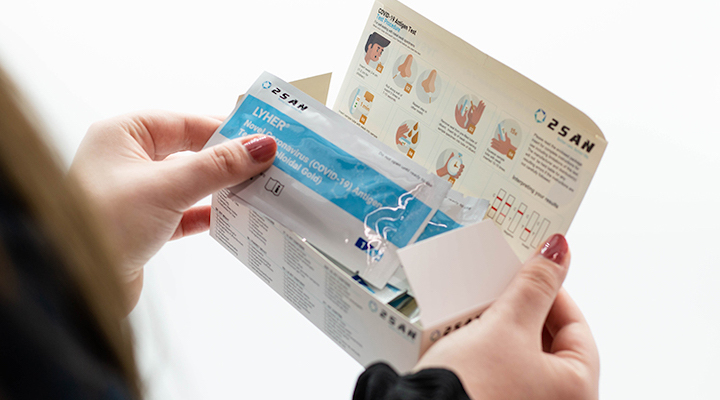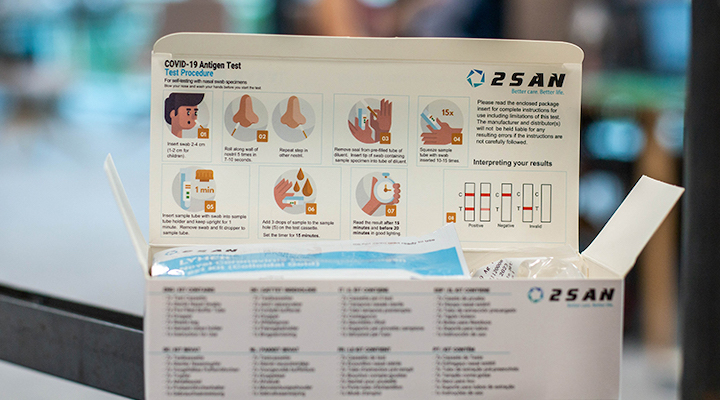It’s ironic, but the health crisis caused by the Covid-19 pandemic is also likely to have spurred the biggest healthcare revolution in a generation – which includes the acceleration of self-diagnostics, better known as self-testing.
In the blink of an eye (a few more blinks in Australia compared to other countries), self-testing for Covid-19, through lateral flow Rapid Antigen Tests (RATs), became a normalised form of diagnostics, and one which delivered significant preventative benefits.
RATs popped up in grocery, fuel and pharmaceutical outlets in a flash, and consumers jumped at the convenience of having test kits at home, ready to use, without the need to travel off-site and wait up to 72 hours for the result of a PCR test.
With the category established, the question for retailers and pharmacists is now, what does the future look like, and will this trend become embedded or dissipate?
Our view is that self-diagnostics are here to stay and will become increasingly diversified because despite the likelihood of Covid-19 self-test sales and distribution declining and then stabilising as the virus becomes more endemic, consumers – and crucially workplaces and governments – have accepted self-diagnostics as an important tool in the healthcare continuum.

Here are five trends we think retailers and pharmacies should think about in order to stay ahead of the curve…
- Better health planning through new data and surveillance testing
Self-diagnostics offers the public health sector something it has never had before: access to mass population data on a particular disease, as well as its trends and velocity of movement by postcode.
As a result, some of the benefits include an ability to track the trends of diseases and proactively plan and respond to those illnesses. Also, the ability to locate and isolate any locations of high-risk or minimise the potential impact on vulnerable population groups; and thirdly the ability to minimise the spread of disease through proactive testing and isolation at home.
For the grocery and pharmacy sectors, we recommend keeping a particular eye on self-diagnostic devices that are supported by digital platforms that capture and distribute testing information easily for consumers, primary health providers and health departments.

Inevitably when the next pandemic or major flu season (or equivalent, or both) plays out, rather than products developed in isolation, with a separated diagnostics tool and digital database, the ones which are most embraced by health systems are the ones that integrate both.
Robust cyber and data security measures will also be essential prerequisites to this digital capability.
- Stretched healthcare systems need support – and governments need new tools to support primary healthcare providers.
The Covid-19 pandemic has placed significant strain on an already strained health sector. Health Workforce Australia estimates that Australia will have a shortage of 100,000 nurses by 2025. At the same time, RACGP reports that the Australian population is seeing an increase in the prevalence of chronic disease and co-morbidities, requiring more complex care at the primary care level.
This all comes together to indicate that there will be increasing demand on GPs, as more people with more complex cases are taking longer to treat.
The move to self-diagnostics and the ability to purchase in a retail setting is a ground-breaking opportunity to ease the burden on our health providers.
- Innovation and diagnostics
There are three primary areas of innovation for retailers to stay mindful of: product range, product capability and environmental credentials.
In terms of product range, the immediate opportunity is that retailers should expect to see the entry of dual-Covid and Influenza self-test kits into the Australian market, hopefully in time for what is playing out to be a particularly challenging flu season.

Product capability is an incredibly exciting space. For example, self-diagnostics will not be limited to revealing the disease you’re suffering from, but will ultimately take you through a diagnostic process, to the appropriate treatment, often within the safety and comfort of your own home.
This pathway is particularly important for our more vulnerable members of society. Not only will this allow faster treatment at home, but it will also reduce the load on our healthcare system – saving time and money.
Finally, in the environmental space, there are some incredibly exciting developments that will address and reduce the landfill impact of the medical waste created by Rapid Antigen Tests. These products will be ‘price of entry’ as they become more readily available and demonstrate the testing sensitivity required on a consistent, replicable basis.
- Employer and workforce productivity and safety
We probably all know that the old Codral ad maxim of ‘Soldier On’ will now be superseded by the potential of self-diagnostics.
Before we even consider ‘soldiering on’ – at home or at work, self-testing provides consumers with an evidence base if they are sick and information on what they might be sick from and need treatment for.

This ensures a far more targeted form of treatment for the patient and gives peace of mind to employers and employees alike that the spread of disease can be prevented in the workplace.
Watch this space for new slogans…
- Education and accuracy are essential for consumer confidence.
In Australia, the TGA’s publication of approved rapid antigen tests for Covid-19, as well as advice on high-sensitivity to low-sensitivity tests, was valuable for both the consumer and retailer. As the self-diagnostics category grows, retailers should advocate for this advice to continue to ensure confidence in the market and that the products remain available. A program of audit and random testing would be highly supportive of consumer confidence and ensure quality assurance remains high.
As outlined here, these five trends are just the emergence of what we see as a renaissance of diagnostics. Trends we believe the retail sector should be aware of and begin planning for the grocery, fuel and pharmacy sectors to monitor in what is a relatively new category with significant growth potential and widespread public health benefit.
The pandemic has been incredibly tough, and we are certainly not out of the woods yet – but Covid-19 has accelerated the self-diagnostics sector, helping to contribute to better care and better lives for all Australians.
About the author: Mark Hewlett is CEO of 2San.







